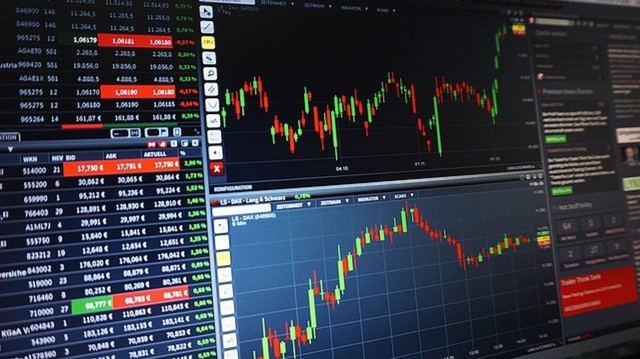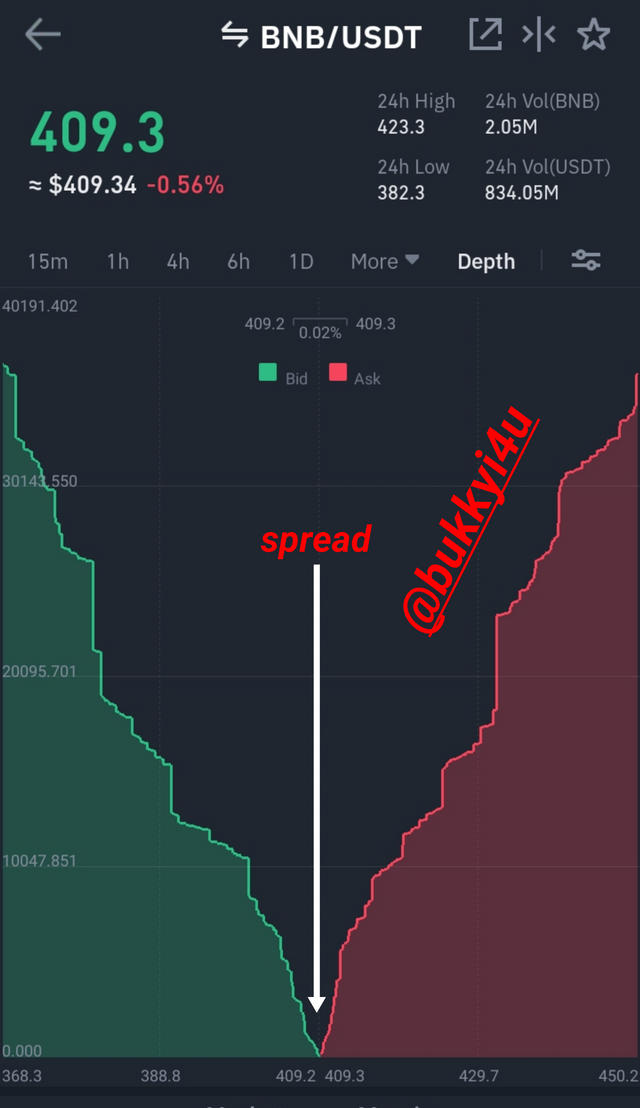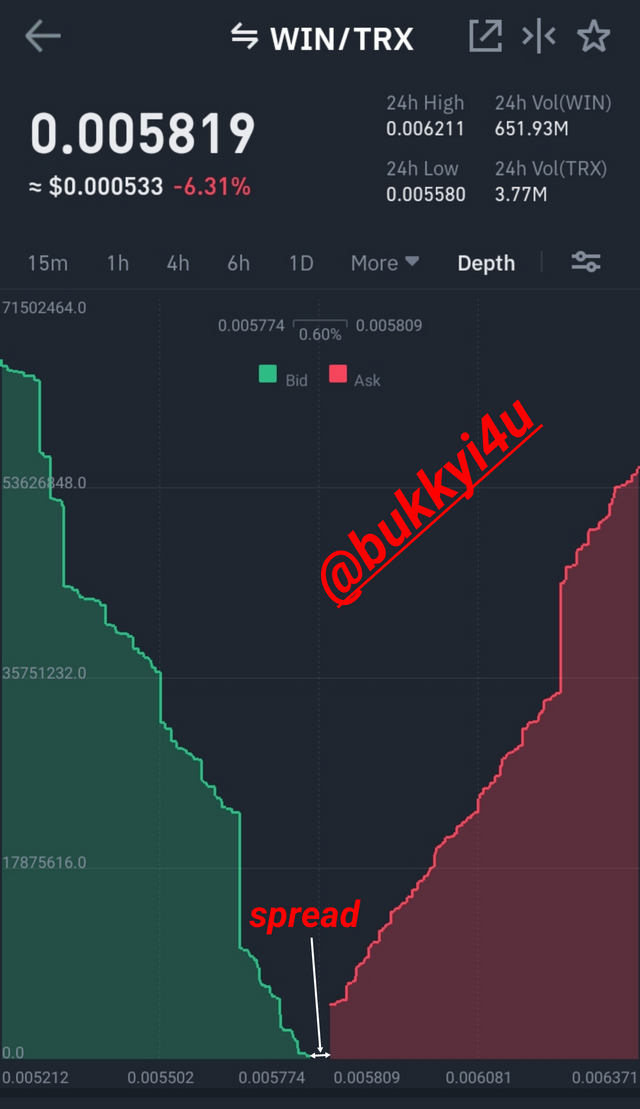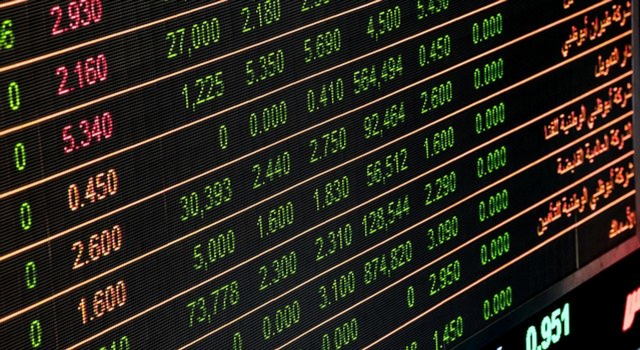Steemit Crypto Academy [Beginners' Level] | Season 4 Week 1 Homework Submitted To Professor @awesononso| The Bid-Ask Spread | By @bukkyi4u

copyright free image from pixabay
The Season 4 Week 1 lecture delivered by professor @awesononso was quite informative as it gave me an awesome opportunity to come to a better understanding of a concept I have often found difficult to grasp due to my laziness to further research on it. So, the lecture now affords me the much-needed time to research more on this important concept while equally putting up a write up of my understanding of the subject to the best of my ability. Have a nice reading.

Properly explain the Bid-Ask Spread.
Before I go deep into a proper explanation of the bid-ask spread it would be instrumental to, first and foremost, understand the fundamental concepts of bid and ask prices.
The Bid Price
The bid price of a crypto asset simply refers to the amount that buyers who wish to acquire the asset are willing to pay for it.
For instance, whenever someone wants to sell a crypto asset he or she has to determine how much people are willing to pay for it. Usually, this is easily done by looking at the bid offers or buy offers displayed on the cryptocurrency exchange. So, the bid price is represented by the highest price that people or someone is ready to pay for the crypto asset.
The Ask Price
The ask price refers to the amount that an investor or someone is willing to sell or accept for the exchange of a crypto asset.
For instance, if a crypto investor wants to purchase an asset he needs to determine how much people are ready to sell it for or accept in exchange for the crypto asset. In this case you would be looking at the ask or sell offers on the crypto exchange. Normally, the ask price is understood to be the lowest price that someone is ready to sell a crypto asset as shown on the crypto exchange.
The Bid-Ask Spread
Simply put, the bid-ask spread is a term used to describe the difference between the buy (or bid) and the sell (or ask) prices of a crypto asset. Actually, the market maker would benefit from the bid-ask spread since it represents his potential profit. Also, it should be seriously taken into account when trading cryptocurrencies because it could essentially denote a hidden cost that could be accumulated while trading cryptos.
An illustration of this statement is a situation whereby a crypto asset has a bid price of $20 and an ask price of $30. If an investor buys at the ask price of $30 and decides to immediately sell off his position at the bid price of $20, he would lose $10 in the process.
The Bid-Ask Spread For BNB/USDT

Fig 1: BNB/USDT spread(Binance)
Normally, when an asset has a high trading volume it would have a low spread. Such a market is said to be highly liquid. An example is the BNB/USDT chart above which shows a very low spread of 0.02%.
The Bid-Ask Spread For WIN/TRX

Fig 2: WIN/TRX spread(Binance)
On the other hand, an asset with a low trading volume would have a large spread. Such a market is said to be illiquid. An example is the WIN/TRX chart above which shows a large spread of 0.60%.

Why is the Bid-Ask Spread important in a market?
The bid-ask spread is quite important in a market for a number of reasons. Some of these reasons include:
- The bid-ask spread is an important parameter for measuring the liquidity of an asset. Crypto assets with higher trading volumes are more liquid and have the potential of filling out orders more quickly. Highly liquid assets come with very low bid-ask spreads and vice versa.
- The bid-ask spread can be used to measure the risk involved in trading in cryptocurrency asset. Buying an asset with a large spread comes with the inherent cost of possibly incuring some losses should one decide to sell back instantly. Equally, this means that in order to be in gain you would have to wait for a little bit longer for the price to move reasonably in a favorable direction before deciding to sell off.
- The bid-ask spread gives you a sense of the kind of order to place in a crypto market. For example, with a very narrow bid-ask spread even market orders could be filled reasonably. However, with a large spread comes with the danger of a market order that could be remarkably farther away from your desired price. In this case a limit order would best suit you when the market moves in your favour.
- Since it equally indicates trading volumes, the widening or narrowing of the bid-ask spread can give you a sense of where the crypto market is moving. Increased volumes with narrow spreads could indicate a rising market.

If Crypto X has a bid price of $5 and an ask price of $5.20,
a.) Calculate the Bid-Ask spread.
b.) Calculate the Bid-Ask spread in percentage.
Given:
Bid price of Crypto X = $5
Ask price of Crypto X = $5.20
a.) Recall that:
Bid-ask spread = Ask price - Bid price
Hence, Bid-ask spread = $5.20 - $5
= $0.20
Therefore, the Bid-ask spread of Crypto X is $0.20 or 20 cents.
b.) Recall that:
Bid-ask spread percentage = (Spread/Ask Price) X 100
Where,
Spread = $0.20 and Ask Price = $5.20
So, Bid-ask spread percentage = ($0.20/$5.20) X 100
= (0.03846) X 100
= 3.846
Therefore, the Bid-ask spread percentage of Crypto X is approximately 3.85%.

If Crypto Y has a bid price of $8.40 and an ask price of $8.80,
a.) Calculate the Bid-Ask spread.
b.) Calculate the Bid-Ask spread in percentage.
Given:
Bid price of Crypto Y = $8.40
Ask price of Crypto Y = $8.80
a.) Recall that:
Bid-ask spread = Ask price - Bid price
Hence, Bid-ask spread = $8.80 - $8.40
= $0.40
Therefore, the Bid-ask spread of Crypto Y is $0.40 or 40 cents.
b.) Recall that:
Bid-ask spread percentage = (Spread/Ask Price) X 100
Where,
Spread = $0.40 and Ask Price = $8.80
So, Bid-ask spread percentage = ($0.40/$8.80) X 100
= (0.04545) X 100
= 4.545
Therefore, the Bid-ask spread percentage of Crypto Y is approximately 4.5%.

In one statement, which of the assets above has the higher liquidity and why?
Crypto X has a higher liquidity because it has a more narrow spread which indicates higher trading volumes that would eventually result in orders being filled out more easily.

Explain Slippage.
Slippage in cryptocurrency trading refers to a situation whereby an order is executed with a price that is not the same as the requested price. Most times this would occur in fast-moving and highly volatile markets. Such markets are always prone to switches in trends that could have been quite unexpected often resulting in market orders not being matched at the selected prices.
The slippage which occurs with an asset could be zero, negative or positive. It would vary depending on a few variables such as the price movement of the asset, whether it is an order for closing or opening a position and on whether it is a sell or buy order. It would mostly occur when there isn't enough volume to maintain the bid-ask spread at the requested price especially with large market orders.
Generally, the risk of being exposed to slippages can be minimised by:
- Trading in markets that have a high liquidity with lower volatility or fast movements in prices
- Trading in the most active hours of the day when engaging in a market with low volatility
- Trading more with limit orders alongside guaranteed stop limits
- Learning more on how the crypto exchange deals with slippages as a precautionary step

Explain Positive Slippage and Negative slippage with price illustrations for each.
Positive Slippage

copyright free image from pixabay
A positive slippage is one in which a market order is eventually executed at a price that is better than the requested price. In this case the bid or buy price in a long trade would have decreased while the ask or sell price in a short trade would have increased. Slippages generally occur when market orders are used.
Price illustrations:
An instance is a situation whereby a buy position was opened for, say, BNB/USDT to be purchased at a prevailing market price of $410. If this trade gets executed at $408.5, then a positive slippage would have occurred. This can be calculated thus:
$410 - $408.5 = $1.5.
This represents a gain of $1.5.
Another instance is a situation whereby a sell trade for, say, ADA/BTC is entered at a prevailing market price of $2.55. If this trade gets executed at a price of $2.65 then a positive slippage would have resulted and can be calculated thus:
$2.65 - $2.55 = $0.1.
This represents a gain of 1 cent.

Negative Slippage
A negative slippage is one in which a market order is eventually executed at a price that is worse than the requested price. Usually, the asset of the trader loses value. In this case the bid or buy price in a long trade would have increased while the ask or sell price in a short trade would have decreased.
Price illustrations:
An instance is a situation whereby a buy position was open for, say, AVAX/USDT to be purchased at a prevailing market price of $42.22. if this trade gets executed at $42.35 then a negative slippage would have occurred and can be calculated thus:
$42.35 - $42.22 = $0.13
This represents a loss of 13 cents.
Another instance is a situation whereby is sell trade for, say, BAT/BTC is entered at the prevailing market price of 0.00001712. If this trade gets executed at a price of 0.00001709, a negative slippage would have occurred and can be calculated thus:
0.00001712 - 0.00001709 = 0.00000003
This represents a loss of 0.00000003 satoshis.

Conclusion

The concept of bid-ask spread in cryptocurrency trading is quite important as it can help traders to make better informed decisions on how to undertake trades if market orders must be used. It helps traders to identify liquid markets and can even help to give a sense of the direction of price movement.
It is equally important to learn how to avoid negative slippages when it comes to using market orders to undertake trades. Hence, traders should learn to trade in markets with higher levels of liquidity and lower volatility in price movements when making use of market orders.

Hello @bukkyi4u,
Thank you for taking interest in this class. Your grades are as follows:
Feedback and Suggestions
Thanks again as we anticipate your participation in the next class.